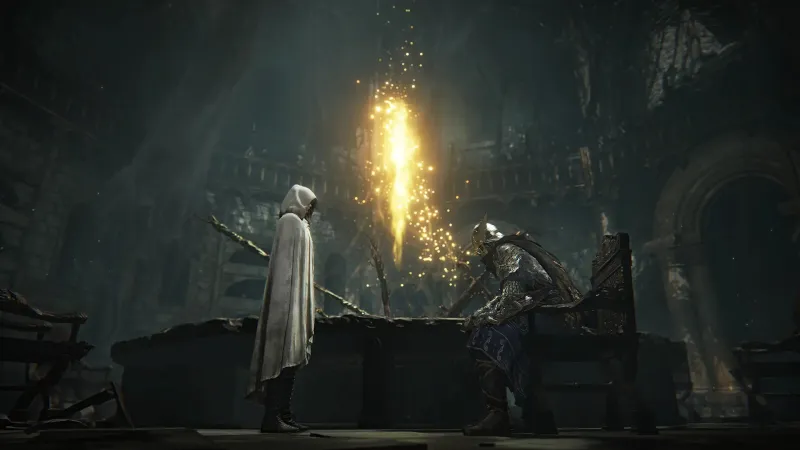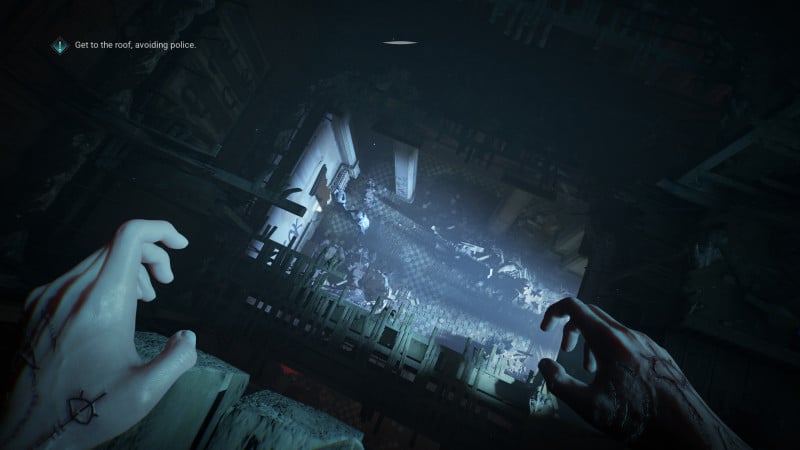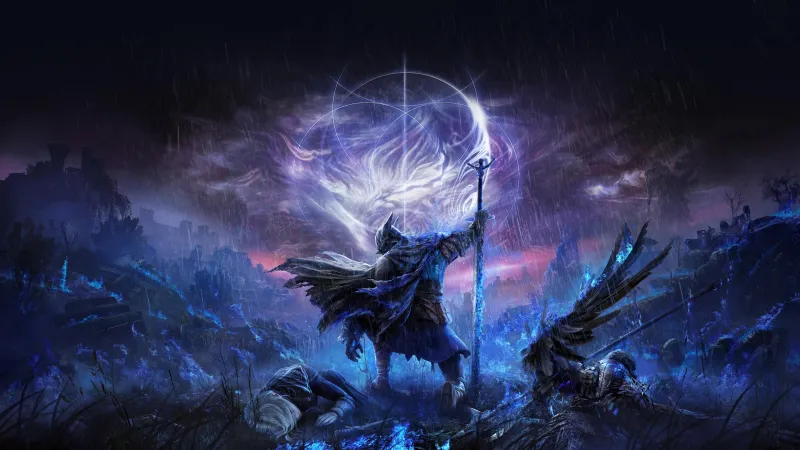I was skeptical of Elden Ring Nightreign when I first learned of it. Elden Ring is a masterpiece, and though I yearned for yet another visit to The Lands Between, doing so in a run-based roguelite format with a battle royale-style circle closing in on me wasn’t my first choice. In my first dozen hours in Nightreign, I remained skeptical. I wondered if this arcadey format cheapened everything that made Elden Ring so great – it certainly felt like it was on its way to doing so. But at some unceremonious point in the first 12 hours or so, the knowledge I acquired over my previous runs converged, and the pieces clicked into place.
Suddenly, I was a master of this parallel Lands Between, calling out key locations my trio needed to hit before the day was up, carving out efficient pathways on the map to secure success, and shouting out moves and dodge timings in real-time to help my team. Nightreign condenses the journey of Elden Ring, its highs and lows, and the acquisition of knowledge into a 45-minute run repeatedly, often to great success. Even though that success comes with some significant caveats, it had me saying, “Just one more run,” over and over again, a marker of excellence in the genre.
Set in Limveld, the starting area of Elden Ring, but in a different timeline, players select one of eight Nightfarers at the Roundtable Hold to take on one of the game’s eight expeditions. You have one goal during these: survive through three days, which requires taking down lots of enemies to level up, collecting armaments and items, and defeating major bosses that attack with each day’s end. A successful expedition through Limveld brings you to a fight against the Nightlord, and defeating five Nightlords brings you to the credits. A loosely structured narrative ties the game’s run-based premise together, but it’s barebones, providing just enough justification for those seeking it out.
Though learning new Nightfarers on the fly can be detrimental to the others in your trio, all eight playable characters bring something valuable and unique to the roundtable. I stuck with the ranged archer Ironeye character, who is nimble and perhaps the most essential of any run, but I enjoyed the tanky Guardian, too, with his invincibility casting ultimate ability. I look forward to mastering the other six Nightfarers as I shepherd new players through this world. Special “Remembrance” questlines for each character ensure I take them through various runs to complete specific objectives like killing a boss to collect an item, as do unlockable outfits and the constant chase of permanent equippable Relics that offer run-changing buffs and effects.
The difference between my runs in the opening hours and the runs I complete now, 41 hours in after defeating every Nightlord, cannot be overstated. I went from casually exploring camps and locations, scouring for loot and secrets, like I would in Elden Ring, to realizing every second wasted has the potential to be ruinous. There is no time to explore, search for secrets, or try out new tactics, at least if you want to defeat the Nightlord at the end of day three (let alone the major bosses at the end of day one and two).
Nightreign might be the fastest roguelite, a lesson in min-maxing that punishes idle behavior and indecisiveness. Alongside the other press reviewing this game, linking up in Discord consisted of casual greetings before a succinct lock-in moment as we all began quietly scouting the map while waiting for our Nightfarers to drop into Limveld. By the time we land, we already have our first day on the expedition planned, ready to begin thinking about our day two plans well before hitting level four. It’s fast, demanding, and all the more stressful because of it, but there’s something special about receiving everything you get out of a single-player From Software game in a 45-minute run.
That is, when the game’s caveats don’t smash through your enjoyment like a club the Raider Nightfarer might carry. Predictably, matchmaking is a mess. This is annoying in a single-player From Software game, but unacceptable in Nightreign, which is explicitly designed for three-player co-op. And though From Software says this game can be played solo, the scaling feels so off that it’s a challenge for only the best players, or in other words, the true masochists. Even with two other teammates in a voice chat doing everything we’re supposed to, whether using password matchmaking or invite matchmaking, it was a coin toss on whether it’d work. When it didn’t work, it was never clear why. Though random matchmaking is always challenging with a small player pool like we had pre-launch, it is worrying that none of the other systems work particularly well. Still, playing with friends is as challenging as ever due to From Software’s archaic multiplayer.
The flawed matchmaking becomes even more frustrating when you’re seeded a map that feels like a failed run from the jump. Though there are times when I prevailed without what I thought I needed, it’s clear what’s necessary in each expedition. The first Nightlord is weak to holy damage, and ideally, you get some holy camps on your map, marked with a symbol to let you know this is a location you should loot for holy armaments. But if you don’t get those camps, there’s a solid chance you don’t find a holy weapon elsewhere, meaning you can’t take advantage of the Nightlord’s primary weakness. Of course, there are other ways to overcome, but Nightreign tells you what is effective against the Nightlord upfront. It’s urging you to utilize a tactic, and it sucks to realize at first glance of the map that you likely won’t get to do so. That frustration pops up in different ways on an expedition, whether it’s a lack of the camps you need, a world boss that’s far overtuned (looking at you, Bell-Bearing Hunter), or a storm circle that puts you on the run for much of the day, meaning you’re skipping valuable points of interest and boss fights just to survive.
Sometimes my teammates and I failed an expedition because of something we did wrong, whether that’s misreading a boss, taking too long to loot an area, or missing out on a key location like a flask-granting church. There were lessons to learn in each of these runs. There were an irritating number of times when my teammates and I failed because of Nightreign’s random elements, which felt out of our control and maddening as a result. Yes, this is par for the course for a roguelite, but achieving success feels so rigid in Nightreign that there isn’t room to experiment with something different when things go wrong. I desperately want a button that allows your trio to choose to restart an expedition, rather than waiting to die to return to the roundtable hold, and hopefully get back into another run without a matchmaking issue.

Still, whether I completed a run, died because of a mistake I could learn from, or met an early end because luck wasn’t on my side, I was always raring to begin another expedition. The adrenaline and dopamine of a great Elden Ring session are present throughout Nightreign, and it’s exciting knowing you’re theoretically just 45 minutes away from experiencing those feelings again.
Nightreign is at its best when I’m at my best, which means From Software’s take on the roguelite genre needs to meet me halfway, leaving its frustrating misgivings at the roundtable hold. When the matchmaking works, when the map randomness gives my trio a fighting chance, and when the storm doesn’t punishingly throw an unfair wrench into the expedition, I’m excited to rise to the challenge. The reward for my efforts is the mastery, knowledge, and adrenaline I spent dozens of hours building in Elden Ring, condensed into a single run. And every success is as visceral and glorious as the last.








